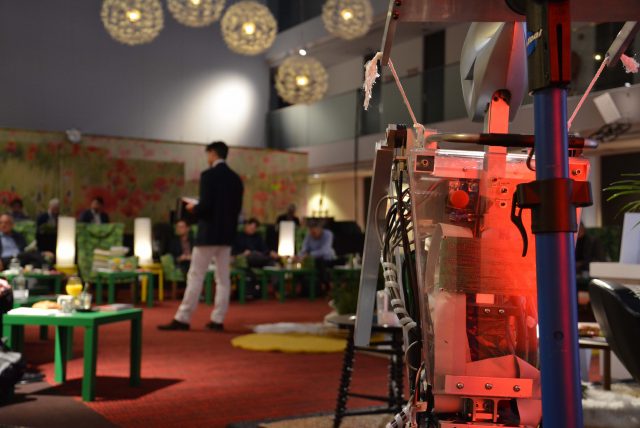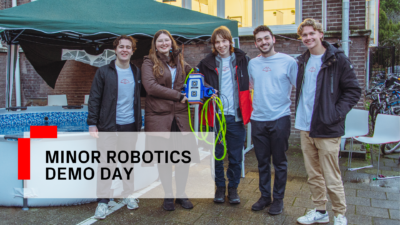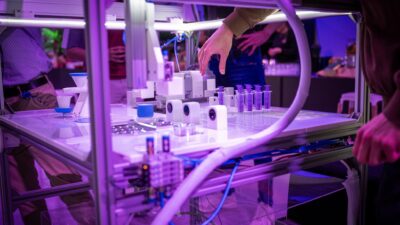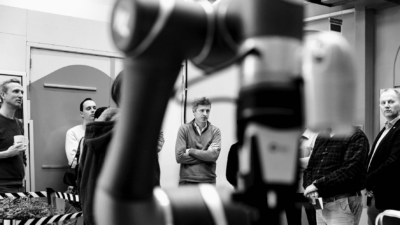The robots are waking up, coming out of their cages and into our lives. That was the central theme during the first day of the International Masterclass Robotics 2016. But just how far are we willing to hand over control?
Moderator Arthur de Crook and professor Martijn Wisse of TU Delft Robotics Institute gave an introduction to the International Masterclass Robotics. The idea behind it is to update business leaders, business journalists and strategic decision-makers on the impact of robotics on industry and society over the next years and decades.

What they first got to hear during the morning sessions is that the ‘industrial robot is waking up’. That has of course everything to do with the rapid developments in artificial intelligence, which is making robots smarter.
“In the future, robots will be easier to use”, Eric Truebenbach told the participants. That will be achieved by the use of force feedback, 3D vision, more sensors and deep learning. “It’s all about making robots safer, easier to use and therefore cheaper.”
Kanter van Deurzen of Delft Robotics told us what that means for businesses. Artificial intelligence, advancements in 3D vision and 3D printing make it possible to automate tasks which until now require the use of manual labour, such as bin picking. Small and medium sized enterprises can profit from this new technology as well, as the systems are relatively cheap to build.
Out in the real world
Before lunch, the robots came out of their cage. After lunch they came into our lives. Riender Happee from Delft University of Technology spoke about the implications for automated driving. That is already a reality in the Netherlands. “Driverless vehicles are routinely transporting residents in the Rotterdam area”, he told. But it will take time before the self-driving cars will reach the city centres. For now, the focus will be on the highway.
Professor Pieter Jonker of Delft University of Technology offered a inspiring case study. He demonstrated LEA: a mobile personal assistant with lots of computers and sensors in it. It helps elderly people with standing up and sitting down, going to the toilet, with exercising and… with dancing!
Jonker is planning to start producing LEA next year. “A lot of people want to buy one”, he said. “Every elderly person is different. But everyone says: it improves the quality of life.” Cock Heemskerk of HIT used similar words when he introduced ROSE, his care robot for the elderly.
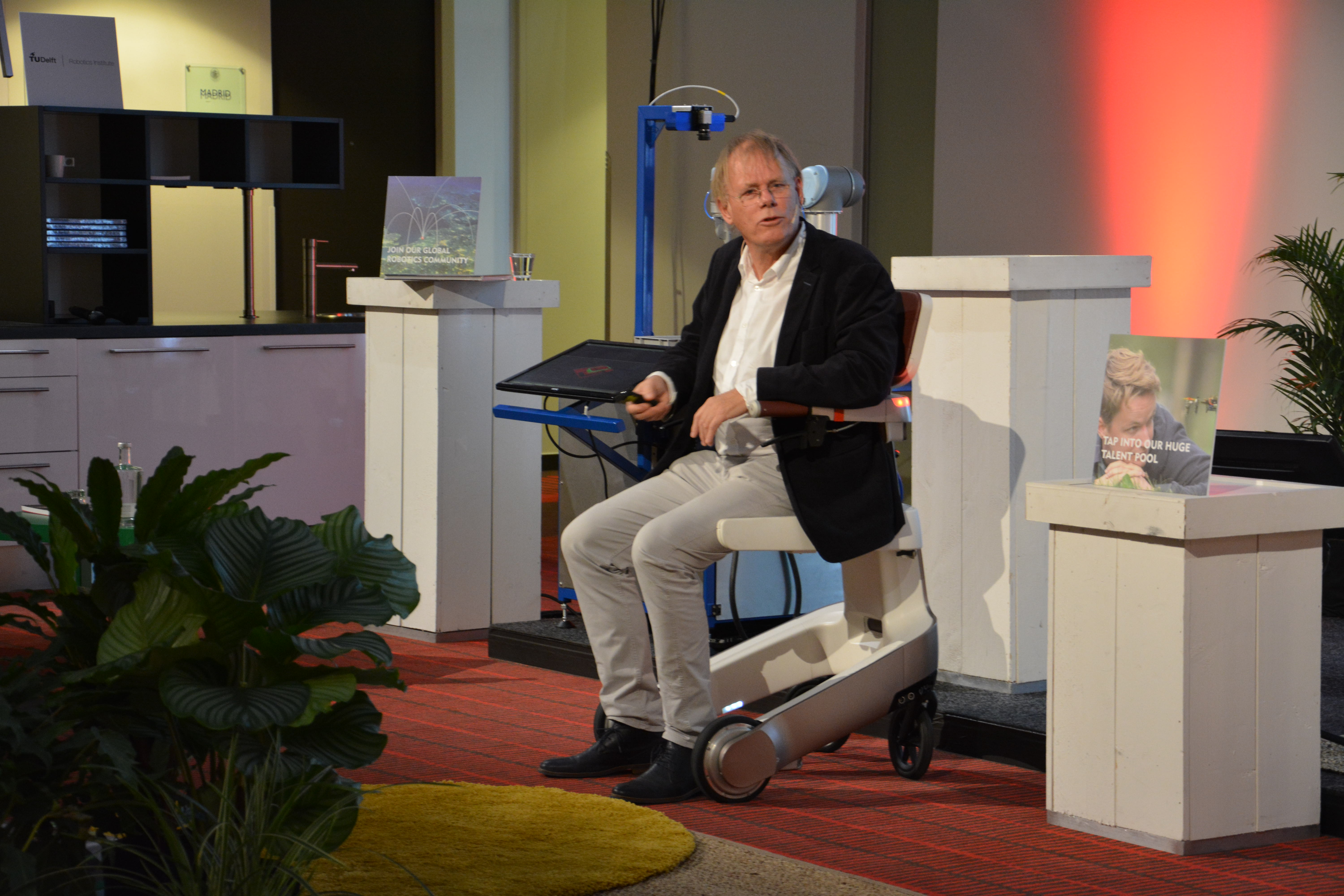
Robots for people
David Abbink, associate professor at Delft University of Technology, offered his insights on the way we will hand over control to intelligent machines. In his vision, we will not hand over total control. It is much better to share control. “Some kind of natural blending, some kind of cooperation.”
“My approach is to create a feel for the robot, let the car and driver behave more like a rider on a horse”, he said. “No full autonomy for the robot, no full autonomy for the human.” This approach has lots of advantages. It will for example lead to a much quicker introduction of self-driving cars if you have a good interaction.
The next machine age
Aseem Prakash offered some provocative insights in the future, when robots will be part of our lives. “Since the first time in humanity we will have another form of intelligence”, he said. The coming of the ‘next machine age’ changes ‘everything’. For example, what will we do with the ‘un-automated worker’? Or with a new underclass of smart, well-educated people who struggle to compete with robots?
It is clear to him: companies have to start thinking about the future. “What does my business stand for? And if you don’t go for robotics, what will happen to your legacy?” Prakash’ advise was clear. “You have to apply robotics, because the new machine age is here.” Well, with those statements the participants had something to discuss over dinner.
To read about the second day of the International Masterclass Robotics 2016, click here.
